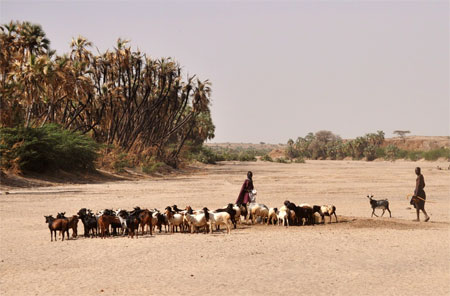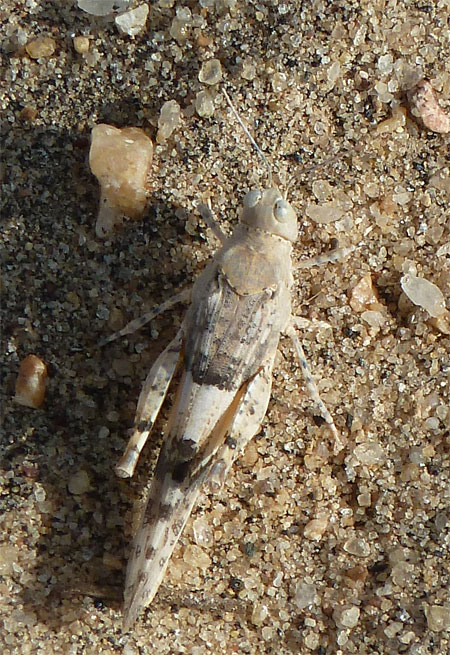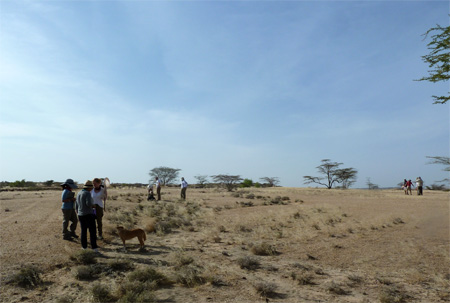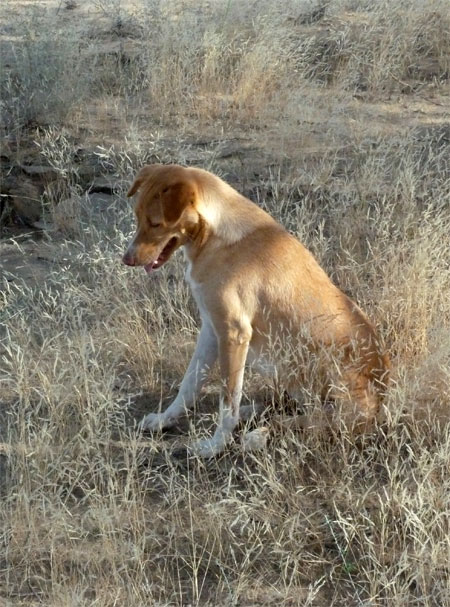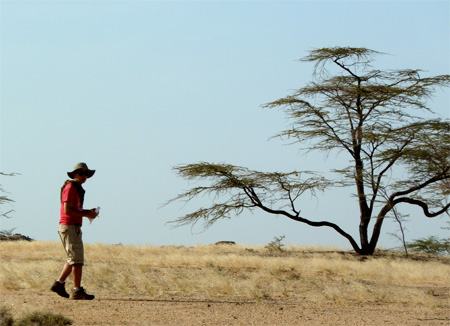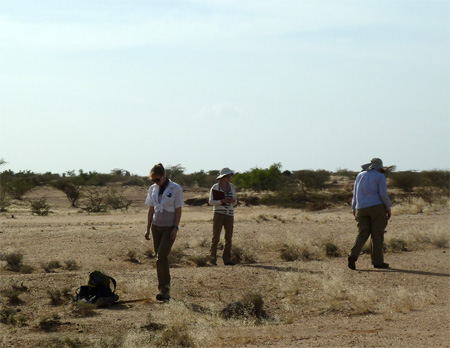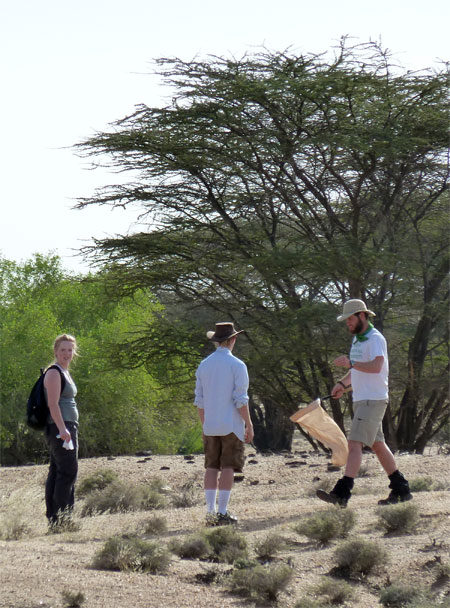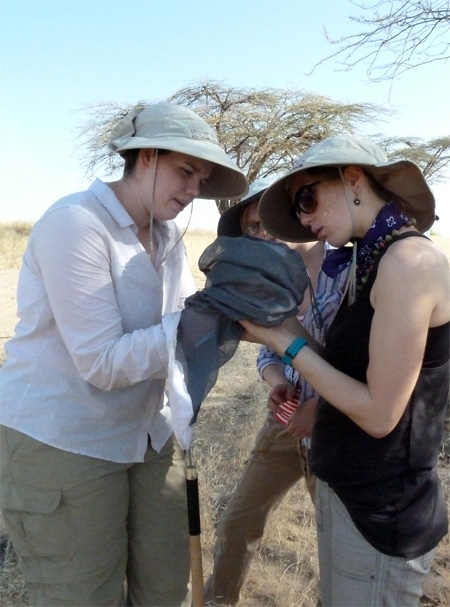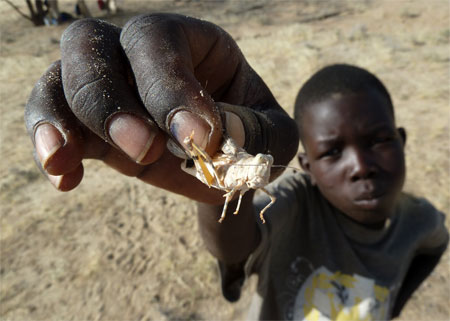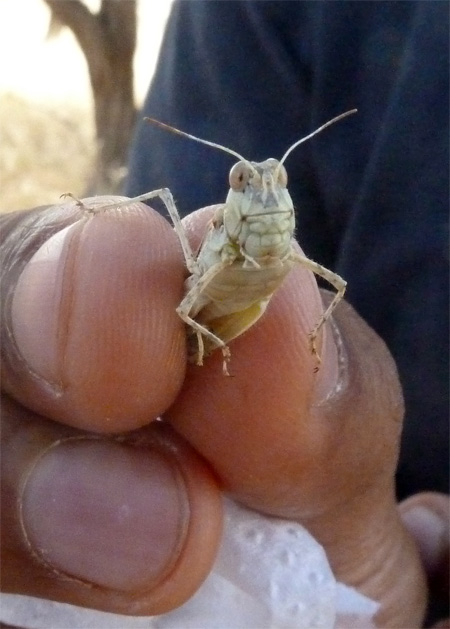Goats vs. Grasshoppers
The two main herbivores present around the Turkana Basin Institute are goats and grasshoppers. The goats are obvious as you travel around – there are small groups of them moving about or resting in the shade of trees during the day.
One interesting question in the ecology of the desert and drylands is the interaction between different species. Both goats and grasshoppers are herbivores: organisms that feed on plants. There are limited amounts of plants available in the desert. Therefore, goats and grasshoppers could potentially compete with one another.
Of course, they don’t compete through direct confrontation. If an individual grasshopper confronted a goat it would meet with a swift end given the vast difference in their sizes. However, competition and other interactions between species can often be subtle and is played out in different ways over time when species share a habitat.
The students and I have been out counting and catching grasshoppers along transects. There are two things we were looking at: the abundance of grasshoppers and the biomass of grasshoppers. We focused our efforts on one common grasshopper species that is in the Short-horned grasshopper family (Acrididae).
Before you read any further, please make a guess on how many kilos or pounds of grasshoppers there are per square kilometre (that’s 1000 metres x 1000 metres). And how many kilos (or pounds of goats?). Remember that Turkana has a lot of goats, but that insects, though small, make up for their small size by occurring in very large numbers…
Who are the really heavyweight herbivores of Turkana?
Goats or grasshoppers?
Goats are the main form of livestock in Turkana at present. Previous research found that households have between 20-50 goats (so a rough average of 35 goats per household) and that one square kilometre can support about 3.5 goats on average. Each goat here weighs about 35 kilos (77 lbs).
Here are some photos of the grasshopper sampling at TBI.
After searching, counting and catching grasshoppers along several transects, we had some data to work with.
We found some interesting patterns from the fieldwork.
There were on average 6.3 grasshoppers per transect in the open areas outside TBI where the goats graze. Each transect was 10 metres long and 1 metre wide. This works out to an average of 0.63 grasshoppers per square metre.
Given that there are 1 million square metres in a square kilometre, then some simple maths gives us an estimate of 630,000 individual grasshoppers per square kilometre. That’s a lot of grasshoppers!
After we counted and captured some grasshoppers, the next step was weighing and measuring them. The students used digital callipers to measure the grasshoppers and I set up a portable milligram scale to weigh them.
We found that the grasshoppers had an average weight of 0.54 grams (about half a gram basically). Using our earlier derived estimate of 630,000 individuals per square kilometre, this gives us a grasshopper biomass of 340 kilos per square kilometre (equivalent to about 740 lbs)! The goat biomass here per square kilometre works out to about 122 kilos (260 lbs).
This means that the weight of grasshoppers is about twice that of goats in the drylands of Turkana!
Based on this exercise, the students learned about how insects can be keystone species. A keystone species is a species that has a disproportionately large effect on its environment relative to its abundance. The grasshoppers both consume large amounts of vegetation and may also benefit from browsing by goats that keeps the vegetation short and dense which they seem to prefer.
This shows why grasshoppers can be called a keystone species in this ecosystem. They have impacts on the habitat far beyond their biomass and numbers.
So the grasshoppers win!

